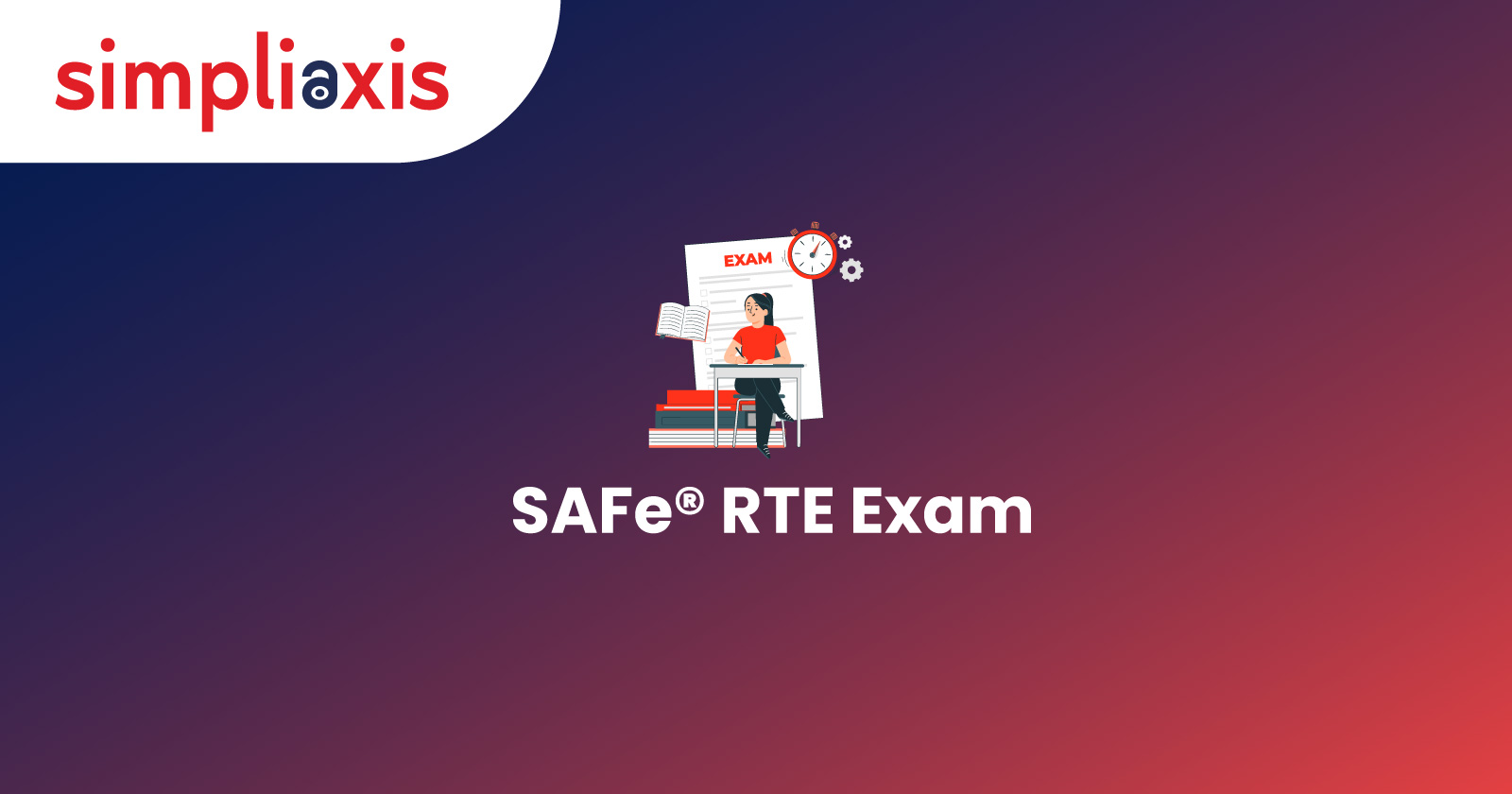Introduction
The SAFe Release Train Engineer (RTE) exam is a crucial step for professionals looking to validate their ability to manage Agile Release Trains (ARTs) in a Scaled Agile Framework (SAFe) environment. Achieving this certification signifies a deep understanding of Lean-Agile principles and the ability to lead large-scale Agile transformations. If you’re interested in becoming a Release Train Engineer, you’ll need to pass the SAFe Release Train Engineer exam & follow a certain path.
In this guide, we’ll take you through everything you need to know about the SAFe RTE exam, including prerequisites, exam format, key topics, and tips to help you pass.
What is the SAFe RTE Exam?
The SAFe RTE exam is professionally designed to assess your ability to implement & manage ARTs; it helps to make sure that this value is delivered consistently & efficiently across the team. The exam tests your knowledge of the SAFe framework and your ability to apply it in real-world scenarios. Professionals who pass the exam earn the SAFe Release Train Engineer (RTE) certification, which is highly regarded in the Agile community. This certification not only boosts your career prospects but also equips you with the skills to lead Agile transformations in organizations that adopt SAFe.
SAFe Release Train Engineer Exam Prerequisites
To become eligible participants for the Release Train Engineer position, professionals should ideally have familiarity with the SAFe framework, preferably through certifications like SAFe Agilist (SA) or SAFe Practitioner (SP).
- Attending the SAFe Release Train Engineer (SAFe RTE) Certification course does not require strict or mandatory prerequisites.
- Anyone interested in working in a Scaled agile framework environment can participate.
Learn more about SAFe RTE Certification Prerequisites.
RTE Exam Format and Structure
The exam pattern and format for the SAFe RTE exam is as follows:
- The SAFe RTE exam is a two-hour, closed-book assessment featuring 60 multiple-choice questions. These questions come in both single-answer and multiple-answer formats, directly reflecting the course material and focusing on key topics relevant to the RTE role.
- Before starting the exam, candidates are required to accept a candidate agreement. A visible timer is provided to help manage time effectively. For questions that require multiple responses, all correct answers must be selected to receive full credit.
To get a clear understanding of the SAFe RTE exam details, refer to the SAFe RTE Certification Exam Pattern outlined below:
| Attribute | Details |
| Duration of Exam | Two hours (120 minutes) |
| Number of Questions | 60 |
| Pattern of Questions | Multiple choice (Single answer) or Multiple responses (2 to 3 answers) |
| Language | English |
| Level of Proficiency | Fully proficient, Expert |
| Passing Percentage | 78% (You need to answer at least 47 questions out of 60 correctly) |
| Type of Exam | Closed book, web-based |
| How to Access | SAFe community platform after completing the course |
| Cost of Exam | If the exam is taken within 30 days of completing the course, the exam fee is included in the cost of the course. If you attempt the exam within 30 days or retake it, the fee is USD 50. |
RTE Exam Syllabus
The SAFe RTE exam syllabus is designed to cover the core responsibilities and knowledge areas essential for a Release Train Engineer. Here are the details of the syllabus:
- Exploring the RTE role and responsibilities
- Applying SAFe® Principles
- Organizing the ART
- Planning a Program Increment
- Executing a Program Increment
- Fostering Relentless Improvement
- Serving the ART
- Continuing Your Learning Journey
Key Topics Covered in the SAFe RTE Exam
The exam covers a wide range of critical topics for an RTE’s role in an organization. These topics include:
- Lean-Agile Leadership: Understanding and applying Lean-Agile principles to lead and manage teams effectively.
- Program Increment (PI) Planning: Mastery of the PI planning process, including setting objectives, identifying dependencies, and ensuring alignment.
- ART Facilitation: Techniques for facilitating ART events, managing risks, and fostering continuous improvement.
- Continuous Delivery Pipeline: Knowledge of DevOps practices and how to implement a continuous delivery pipeline.
- Metrics and Reporting: Using metrics to measure ART performance and ensure alignment with business goals.
SAFe RTE Exam Retake Policy
If you don’t pass the SAFe RTE exam on your first attempt, you can retake it after a 10-day waiting period. Scaled Agile allows up to three retakes, with each retake requiring an additional fee. For each & every retake, participants need to pay. Use the time between attempts to review areas where you struggled and focus on improving your knowledge in those areas.
Tips for Passing the SAFe RTE Exam
To earn the SAFe® RTE Certification, you must complete the three-day SAFe® RTE Training. This course is specifically designed to equip you with the knowledge and skills required to pass the exam. Actively participating in the training and thoroughly reviewing all course materials is essential. The exam is heavily based on the SAFe® framework, so it's important to be well-versed in key concepts and their practical applications.
The exam consists of 60 questions to be answered in 120 minutes, making time management crucial. To ensure you complete the exam within the time limit, practice answering questions under timed conditions. Additionally, collaborating with peers can offer valuable insights and help clarify any doubts. Joining online study groups or forums can be beneficial for discussing challenging concepts.
SAFe RTE Certification Renewal
To keep your SAFe Release Train Engineer (RTE) certification active, you must renew it annually. The renewal process involves:
- Paying an Annual Fee: To maintain SAFe RTE certification, you have to renew it annually. For every renewal, candidates have to pay $295 per year.
- Earning Continuing Education Credits: You need to complete continuing education hours, which can be earned by attending SAFe events, webinars, or taking additional SAFe courses. This keeps you up-to-date with the latest practices and developments in the SAFe framework.
- Staying Engaged: Actively participating in the SAFe community and applying SAFe principles in your work will not only help you meet renewal requirements but also improve your effectiveness as an RTE.
Also, read: |
Conclusion
The SAFe RTE exam is a challenging but rewarding step in your Agile career. By understanding the exam format, studying the key topics, and following the tips provided in this guide, you can increase your chances of passing the exam and earning your SAFe RTE certification. Simpliaxis provides comprehensive training designed to equip you with the necessary knowledge and skills to succeed in this exam.
Whether you’re an experienced Agile professional or new to the role of a Release Train Engineer, this certification will equip you with the skills and knowledge needed to lead Agile transformations successfully.













 +1-361-998-9988
+1-361-998-9988


